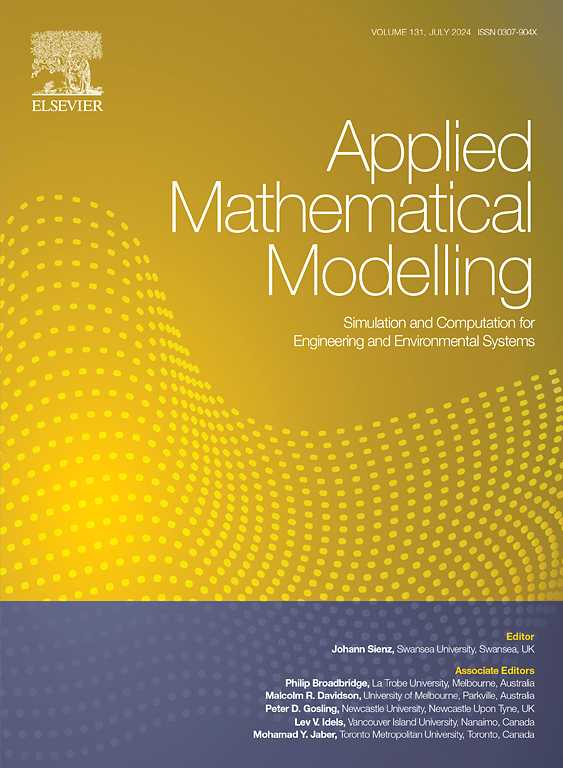Dynamic stiffness method for exact modelling of acoustics black hole beams using Meijer G-functions
IF 4.4
2区 工程技术
Q1 ENGINEERING, MULTIDISCIPLINARY
引用次数: 0
Abstract
The acoustics black hole (ABH) effect shows promising potential for wave manipulation and vibration control. An ABH structure features a gradual reduction of the phase velocity of flexural waves alongside wave compression and energy accumulation when entering the tapered ABH portion where the thickness is tailored according to a power-law (with power index m no less than 2). The corresponding non-uniform wavelength distribution over the ABH structure poses great challenges to conventional modelling methods. To alleviate the problem, this paper proposes an exact dynamic stiffness method for modelling ABH beams with arbitrary exponent equal to or greater than 2 under the framework of Euler-Bernoulli beam theory. For ABH with m > 2, a change of variable and the Mellin integral transformation are conducted to derive the integral representations of the exact solution using Meijer G-functions. The solution for the case with m = 2 is also derived for completeness. Then the dynamic stiffness matrix is formulated through symbolic operation. The Wittrick-Williams (WW) algorithm is revamped to cope with the ABH-specific requirement. Numerical examples are given to validate the solution in integral form, the dynamic stiffness matrix, and the efficacy of the improved WW algorithm. The clear advantage of the accurate integral representations over series representations is justified in the higher frequency range. Covering all ABH-relevant scenarios (with m ≥ 2), the exact modelling framework established in this work offers a powerful tool for the modelling and investigation of more complex structures which are built upon ABH beam elements.
求助全文
约1分钟内获得全文
求助全文
来源期刊

Applied Mathematical Modelling
数学-工程:综合
CiteScore
9.80
自引率
8.00%
发文量
508
审稿时长
43 days
期刊介绍:
Applied Mathematical Modelling focuses on research related to the mathematical modelling of engineering and environmental processes, manufacturing, and industrial systems. A significant emerging area of research activity involves multiphysics processes, and contributions in this area are particularly encouraged.
This influential publication covers a wide spectrum of subjects including heat transfer, fluid mechanics, CFD, and transport phenomena; solid mechanics and mechanics of metals; electromagnets and MHD; reliability modelling and system optimization; finite volume, finite element, and boundary element procedures; modelling of inventory, industrial, manufacturing and logistics systems for viable decision making; civil engineering systems and structures; mineral and energy resources; relevant software engineering issues associated with CAD and CAE; and materials and metallurgical engineering.
Applied Mathematical Modelling is primarily interested in papers developing increased insights into real-world problems through novel mathematical modelling, novel applications or a combination of these. Papers employing existing numerical techniques must demonstrate sufficient novelty in the solution of practical problems. Papers on fuzzy logic in decision-making or purely financial mathematics are normally not considered. Research on fractional differential equations, bifurcation, and numerical methods needs to include practical examples. Population dynamics must solve realistic scenarios. Papers in the area of logistics and business modelling should demonstrate meaningful managerial insight. Submissions with no real-world application will not be considered.
 求助内容:
求助内容: 应助结果提醒方式:
应助结果提醒方式:


